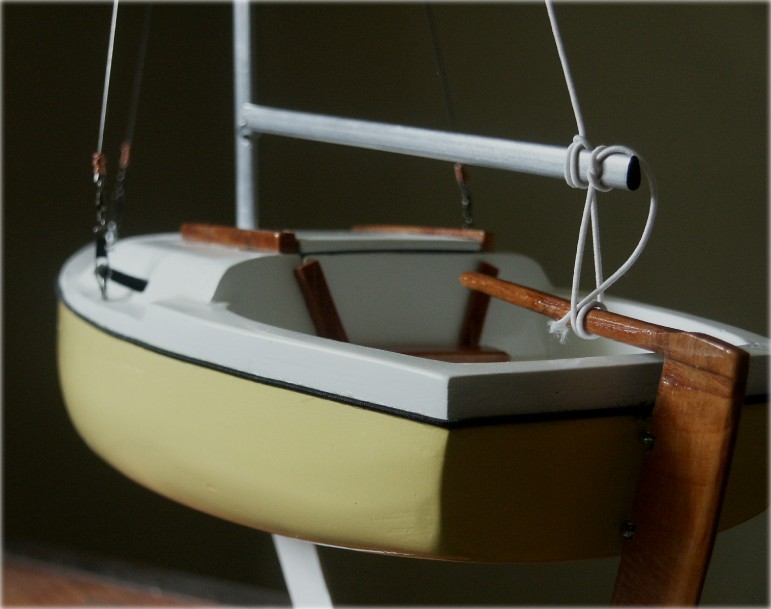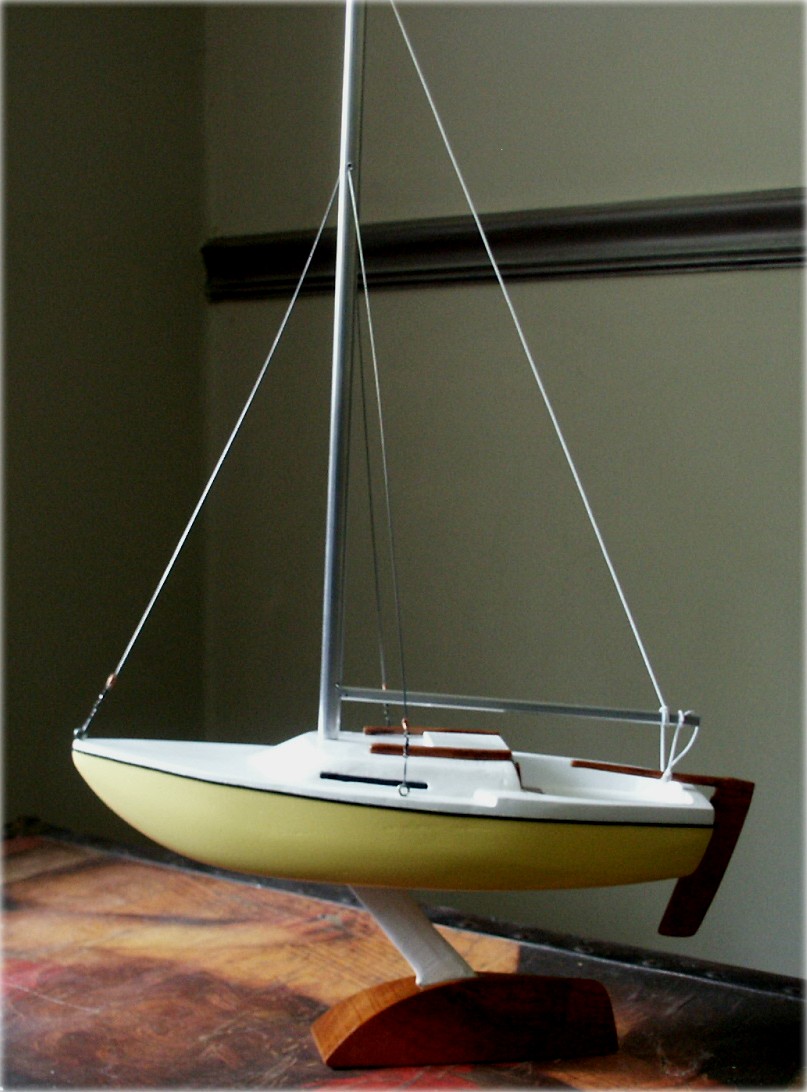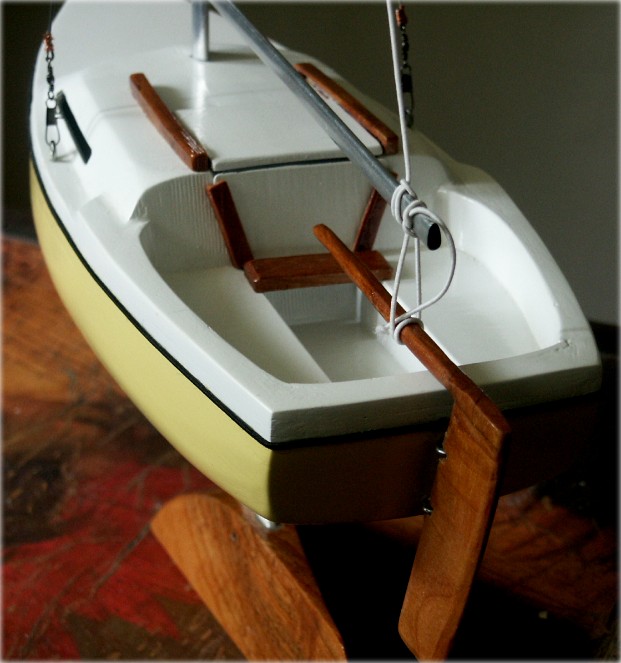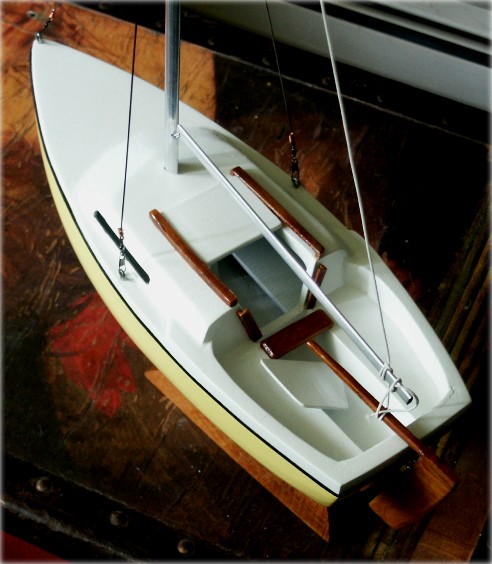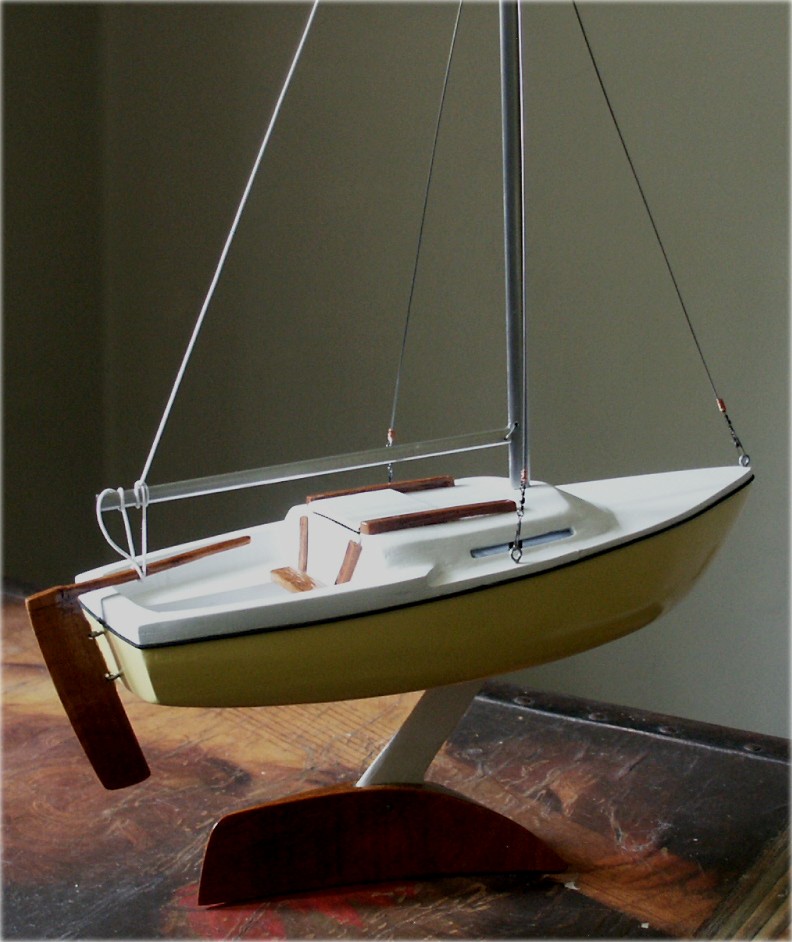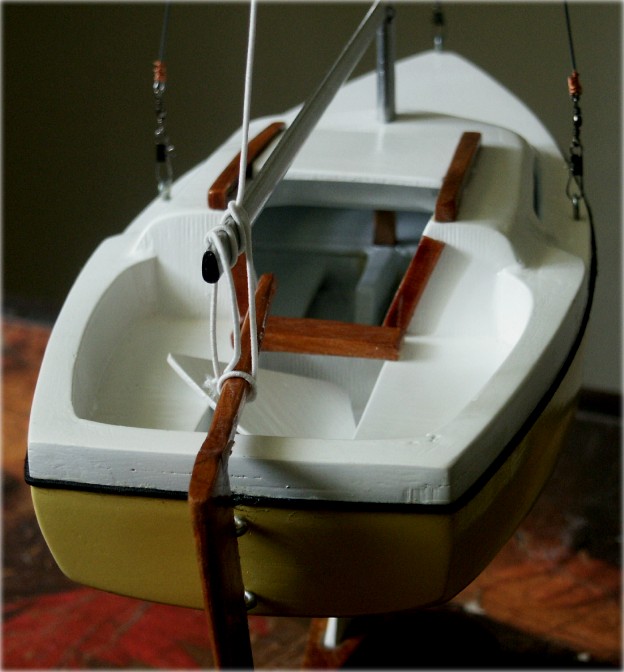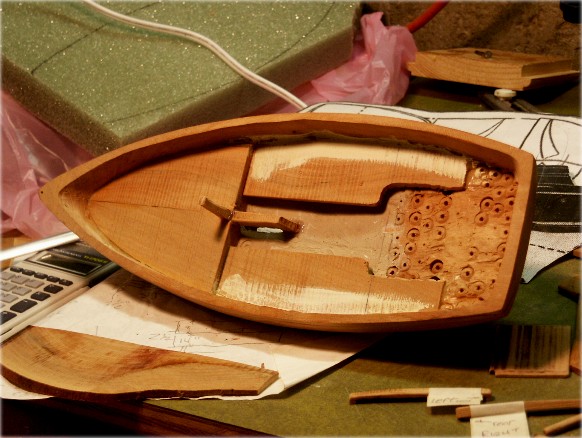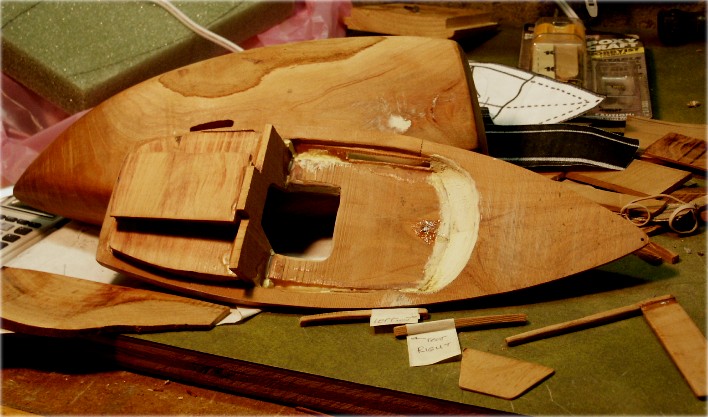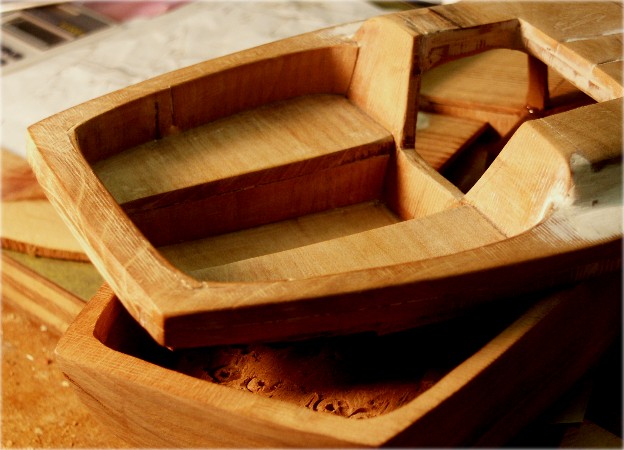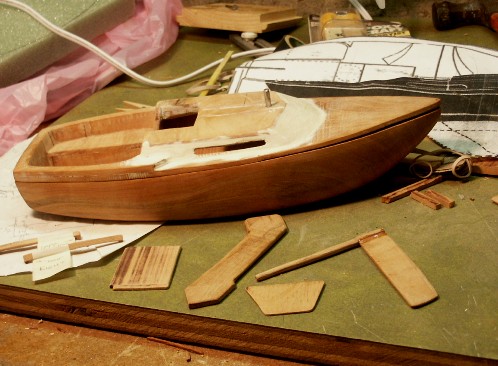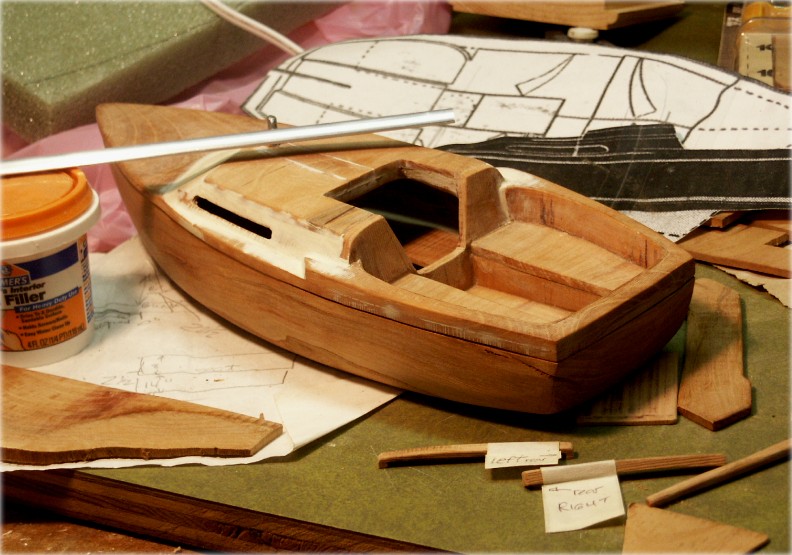Why Not III Model
Photograped 26 May 2003
It was a long time ago that my brother Rick and I built the model of Why Not II together, working down in the basement workshop in Mexico City... probably 1968? It actually seems like that long ago that I started working on this model (actually it was about 3 years ago). It would have been great to work with Rick again but he's out in Arizona, so far away!
We gave the model to our Dad - and as I recall, it was his work to plank the hull with real balsa planks, to replace the cardboard/glue covering we had used. This model is about the same scale as the first.
Anyway, this model sat for a long while because I was finding it really hard to cut and fit this wood - it's all cherry wood, taken from one log that my friend Bobby Nolder gave me.
The lower hull was carved out of one piece, and hollowed out with a drill and chisel. I sliced thicknesses on the band saw for everything else. The deck was made in three sections, and the roof is made up of several layers. Lots of wood filler was used to fill in the contours. The cockpit section was pretty complex too, about 12 parts altogether, some very thin stuff pre-bent after soaking. The mast and boom are made from aluminum tubing - they sell it in tear-drop profile, how cool! I used some fishing kit parts (swivels) to help tighten up the rigging, which Dad finished assembling after he unpacked it.
The forestay and two side-stays are made from piano wire. The finish is primer and enamel, sold in cans (I am glad to have found the proper shade of yellow). The wood-finish parts like the rudder-tiller, hatch rails, and winch joist, are made from the same cherry wood, but finished with spar varnish - literally from the same can that I used to re-do the wood on the real Why Not III, during June, 2003.
Total length is of the model is 12", its mast is 14" tall (actual boat size is 17'4" LOA, with a 21' mast). In some of the "during construction" photos, you can see the plans I made, scaled up from a scan of the original sales brochure. The stand is made from a scrap section cut from the right-front portion of the block that became the hull.
